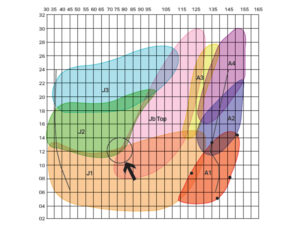Whoever said two heads are better than one hasn’t called tactics in a light, shifty, and dying breeze. There are times when a lot of input can be helpful: someone to watch the breeze, someone to track the competition, someone to report on relative boatspeed. Then there are times when what the tactician really needs is for everyone to keep their thoughts to themselves and let him do his job.
This was the case in the final Swan 42 race of the 2010 Coastal Living Regatta in Newport, R.I. We started the race with a healthy 6-point lead over second and with the dismal forecast it was fairly apparent this would be the only race of the day, if we were in fact able to finish it. The northerly was fading fast and the ebb tide was further lessening the effective breeze.
We owned the pin on the start and were legging toward what we hoped was some current relief on the left side. We were in an ideal position; especially considering one of our top threats was tucked nicely back on our hip. For some reason the chatter started. It was probably because in light air there’s plenty of time to look around and not a lot else to do. The stress of leading the regatta doesn’t help either. Pretty soon everyone on the boat—or so it seemed—was offering an opinion on where to go. We tacked once, then came back to cover the boats that had slipped to the left.
We had lost a bit of our lead, but still had a chance to force the same rival that had once been on our hip after the start into two additional tacks, a death sentence in this light breeze. As we approached his line the chatter rose to a fever pitch.
“We should tack.”
“We should stay.”
“There’s more wind to the left.”
“Where’s the second-placed boat?”
“We need to tack here.”
“We can tack beyond him and still hit him.”
“The guy further left has really nice pressure.”
The result of this “discussion” was an ill-advised tack onto the windward hip of this boat. We, in effect, gave ourselves a leebow. Our rival quickly scooted to leeward, worked to windward enough to give us a taste of his dirty air and motored out to the starboard layline and second place at the windward mark. We endured another handful of tacks and more bad air. We rounded in last and in second place for the regatta if the positions held.
Fortunately we were able to learn on the fly. The decisions on the run were concise and correct. We jibed around the mark, found a sliver of breeze and a beneficial shift, and passed three boats on the run. We inched across the line with the breeze down to a few knots and a point to spare in the overall standings. Phew.









